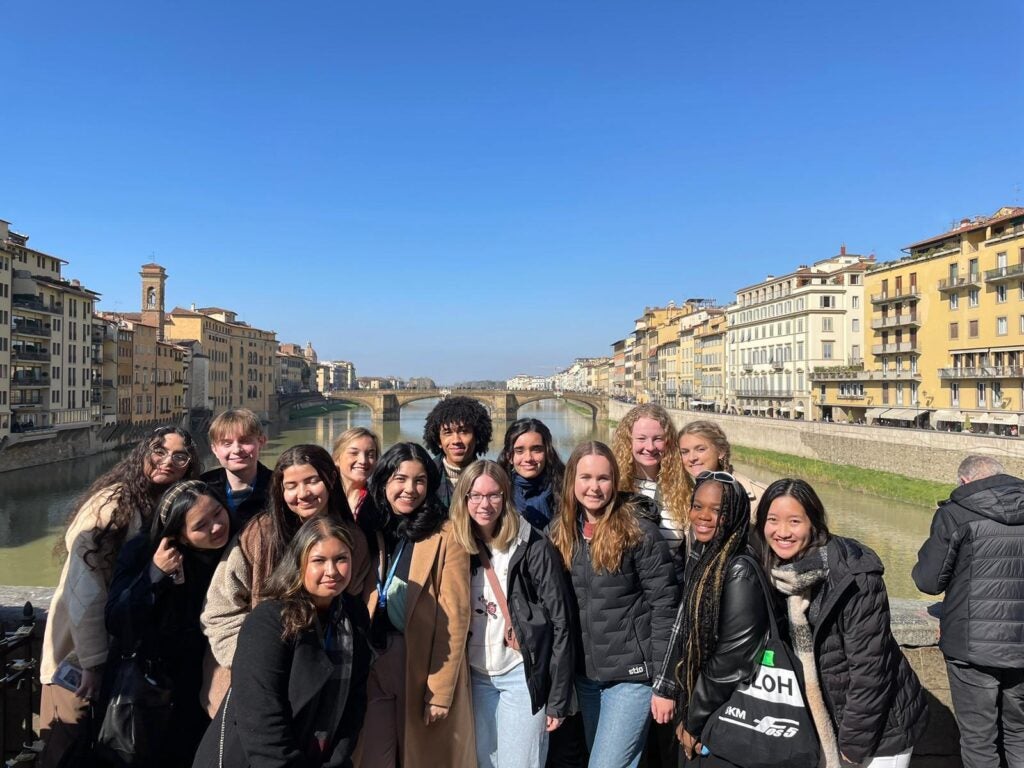Reflection: Finding Balance in Florence
By Mary Nguyen (C’25)
I rely on my habits every day.
From checking my emails to getting to class, falling back on second nature allows me to redistribute my focus to more strenuous tasks. By mid-semester, I had fallen into a routine. The more familiar an experience, the fainter my sensation of it became like I was on autopilot. Complexities waned. Miracles were left undistinguished.
Florence forced me to slow down and open my eyes.
Across the Atlantic and suddenly engrossed in an entirely different culture, I found myself unable to simply gloss over the symbols I was experiencing. One of the first things our class did upon arrival was to admire the incredible Florentine skyline from the Piazzale Michelangelo. We’d find our way through this stunning Tuscan backdrop, often getting lost in its many street vendors and narrow alleyways. Barely picking up the Italian language as we went, I fumbled with wishes of buongiorno and grazie, content in locating the closest gelateria for a quick lick of gelato.
Participating in this College Global Seminar program in Florence gave me the unique opportunity to taste both Medieval and modern-day Italy. Before the trip, my classmates and I spent weeks analyzing literature and the philosophical lens of the great thinkers St. Thomas Aquinas, Dante, and St. Catherine of Siena. Now with the privilege of being at their doorstep, I found that the entire region swirls with their stories and legacies. We heard tales like the precarious quest to bring St. Catherine’s head back to Siena and its transformation into flower petals when when the couriers who possessed her remains were subject to questioning by authorities. I couldn’t help but think: could this possibly be true?
Before this trip, I had a hardened heart. Still atrophic from the repetition of strict academic life, I was slow to embrace the true experience of wonder. I challenged myself to ask: how do the historical legacies of narratives woven about these three philosophers impact our understanding of tradition and community today? Their influence on our contemporary culture and social attitudes is expansive. Learning about their literary contributions was one thing but encountering it in Dante’s medieval-to-modern, house-made-restaurant and Siena’s grandiose neighborhood horse-racing titles was another. I began to realize that if I blinked for too long, I might miss another compelling story or adventure.
Simultaneously though, too much beauty can cause an overdose. It can be oversaturated as frescos and ancient columns meld from one to the next, Michelangelos mix into Caravaggios. Balance is necessary, yet Florence continues to cultivate mystery and serve as a reminder for me to stay alert to the miracles of the world.
Beauty breaks the habitual plaque that builds up over time. I am immensely grateful for the generous alumni and supporters of the Office of Mission and Ministry for making these experiences possible. Through the Global Seminar program and alongside my peers, I’ve felt the encouragement to train my affections to love the right things, to love beauty, to love the truth, and to love each other. Hoyas aren’t just an advertisement of this, they are evidence of it.
“The object of education is to teach us to love what is beautiful.” –Plato, The Republic
